By Ana Rosa Ibañez | Images courtesy of the artist
EJERCICIOS MOSQUETO
Hidden in a small apartment in the street baring the same name, Prem Sarjo, Manuel Peralta and Walter Bee’s project is conceived as an island for investigation and reflexion in the middle of the art market turbulent ocean, and by the same reason it can be considered one of the leaders of alternative spaces.
Exercises of conflict
The intellectual character of the project’s artists and their own production methods, have created a scenery that is in constant change, in content and in shape, accomplishing brief moments of ephemeral stability that if tensioned doesn’t take long to evolve into a next idea. Having a somewhat more confrontational history, nonetheless with a lot of development from a aesthetic perspective, the mutable nature of the project has turned it in a space for reflexion, without ceasing the look for friction through different investigation methodologies, maintaining a certain level in the consistency of the exhibited projects.
The shows are conceived as interceptions within space/time, taking place only every 2 to 4 weeks and only for two days (the rest of the week the apartment is inhabited and under a “semi-common” functioning), hosting artists that are close to or over 40 years old (although they are not closed to new experimentations) and giving them the possibility of exhibiting subjects and investigation processes, that is and absolute opposition to the piece of tradable nature that we are so familiar with thanks to the circuit of galleries and institutions. Ejercicios Mosqueto has its bets on the content.
Now, we can wonder, why artists that age? This is not an arbitrary decision intending to segment generations or creating guilds. Ejercicios Mosqueto works with a certain level of abstraction and manipulation of the plastic language. These are processes that are not conceived by geniality, but rather come from the observation, development and maturity of an idea throughout time. There is something that materializes (or de-materializes) in the work of and artist that has let time run over his work.
It’s a project that mutates in cycles that relate to the necessities that arouse from each experience. For example, their new cycle called 6/6, referring to the numeration of series and the participation of six artists, has generated a strong connection with Francisco Brugnoli and Virginia Errázuriz, who will, out of spontaneous reaction, continue to work in collaborative projects.
INSIDE OUTSIDE
Sarjo’s installation consists of three pieces. They are the result of three performance acts that reflect about language in painting and its relations as an object and a result.
Time as an act of performance
Let’s go back to that previous idea; the capacity of abstracting from an object is given by time, and that becomes the focus in Sarjo’s work. As Mariagrazia Muscatello mentions in the exhibition’s text, we live in a decade where codification and formalization of performance comes to a point where it can be easily confused with street theatre. That is not the case of this exercise, where the performance lies in the physical work and in the history of the objects, leaving a side the live act.

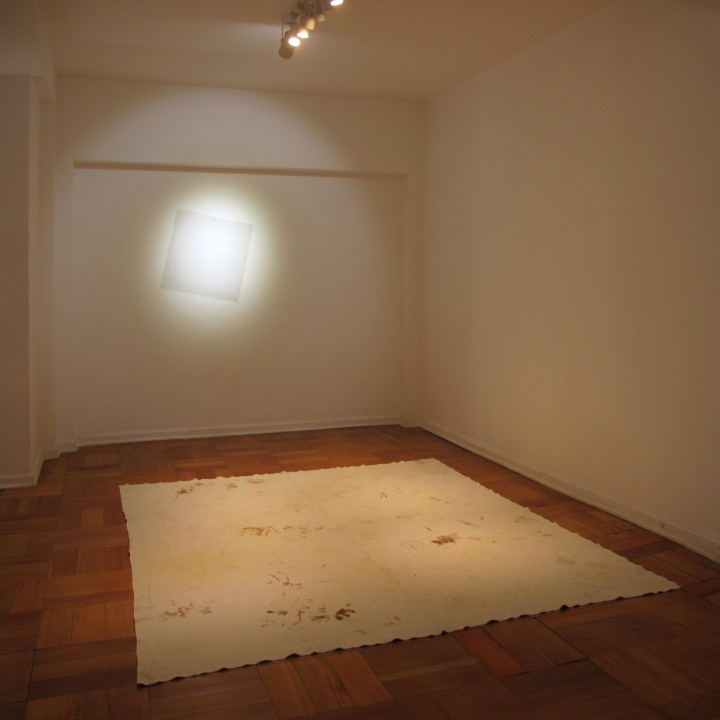
The first piece that we encounter is a canvas (80×80 cm.), which was finished just before the opening of the show, using 1000ml of white oleo. The painting is to be fresh during the two days in which the exhibition happens, and keeps the spectator in constant alert not to ruin it or ruin him/herself. The frame has the same dimensions as Malevic’s White on White who searched for “the supremacy of pure sentiment or pure perception in pictorial arts”. Quoting this artist reflects Sarjo’s own quest to analyze the value of painting as a reflective act. Quoting Malevic generates a textual crossing between art history and a radical rethinking of painting in present. In terms of installation, here we find a displacement in space of both parts of Malevic’s painting, activating the empty space of the room. Space gains value in terms of pictorial density. Emptiness is activated as a part of the installation.
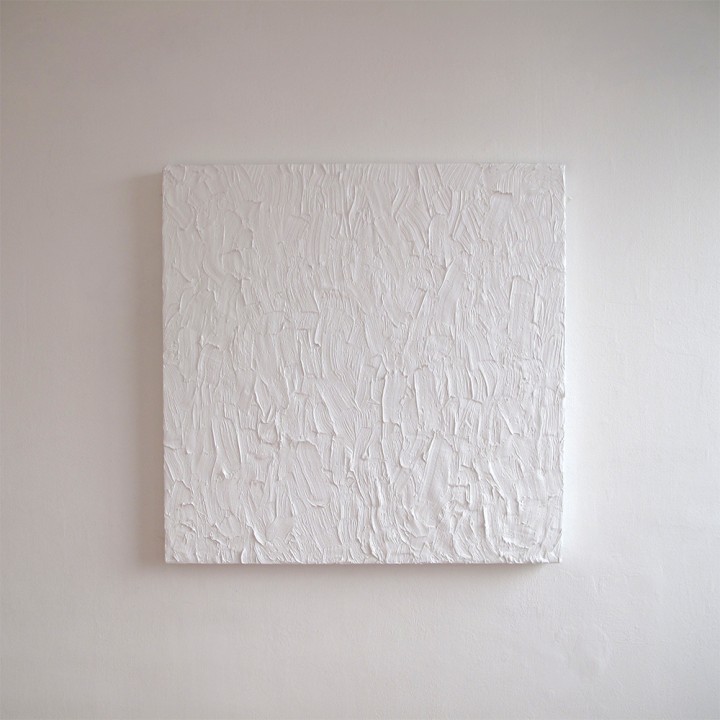
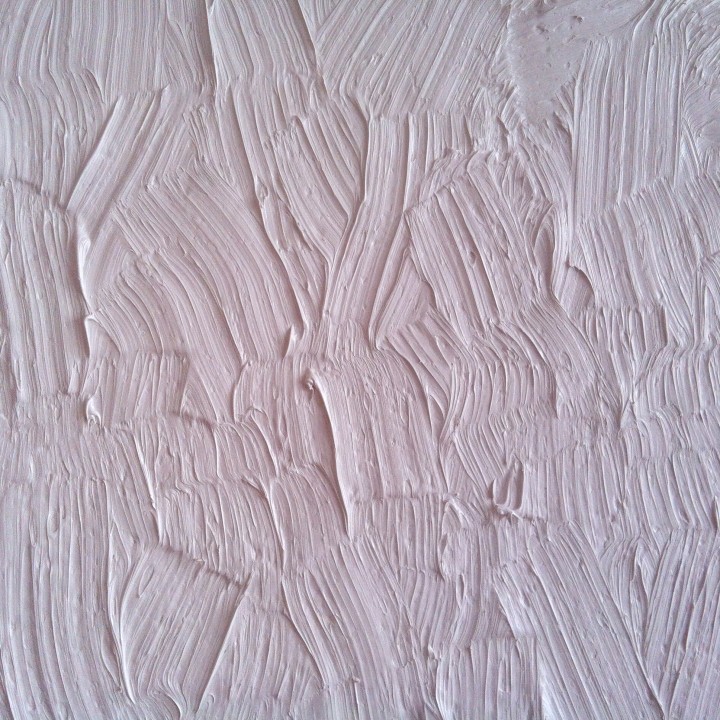
Immediately on the floor, we find a quilt (almost squared, white), marked by six months of sexual relationships, menstruation and body fluids, all conjugated between the artist and a lover. “Lovers” doesn’t need a great staging, and it’s even exposed in the same way in which Sarjo must have exposed it during the six months that it took for the piece to be done, unfolding a piece that is completely objective towards the human processes it witnessed. This sheet is a symbol of rigorous discipline and register that Sarjo maintains over his own life, finding himself in constant eagerness to rebuild his everyday as an art piece, valorizing the most fundamental acts; acts that usually we might lose in our own history.
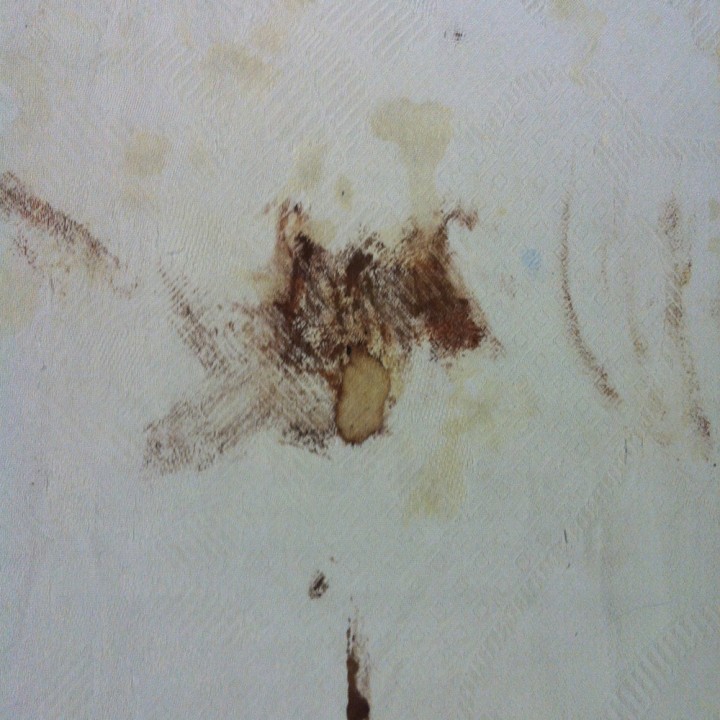
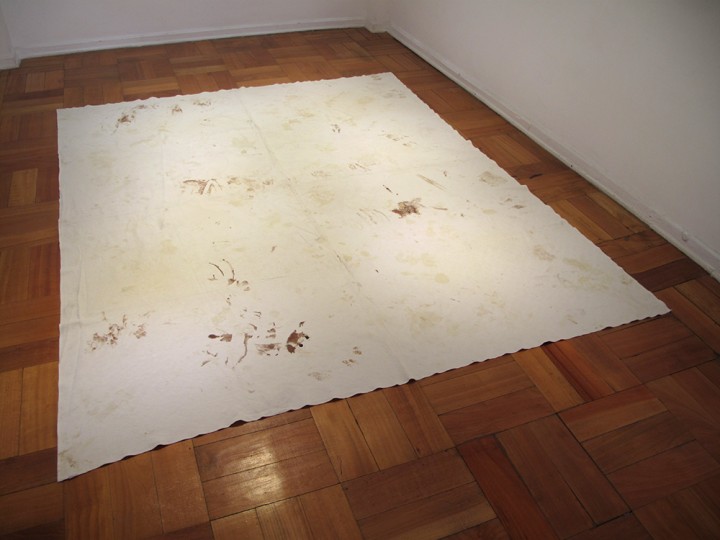
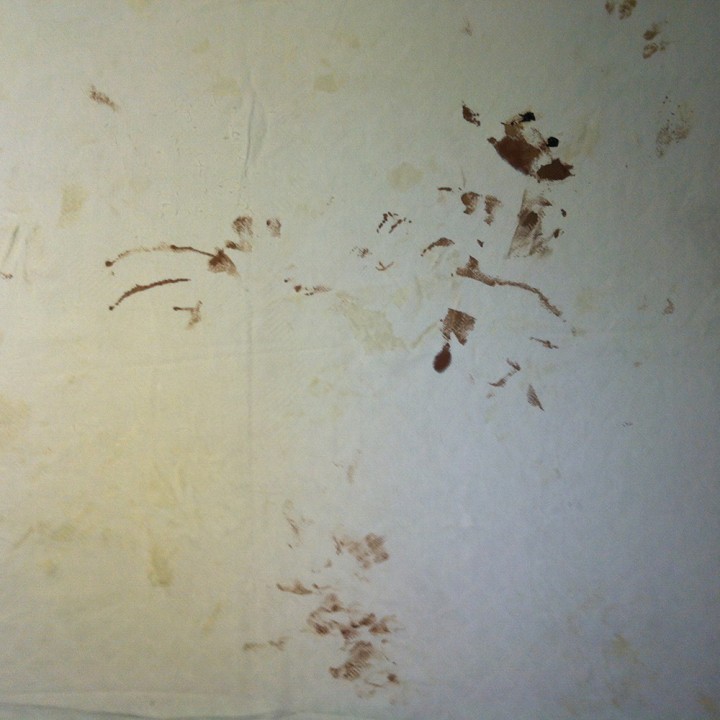
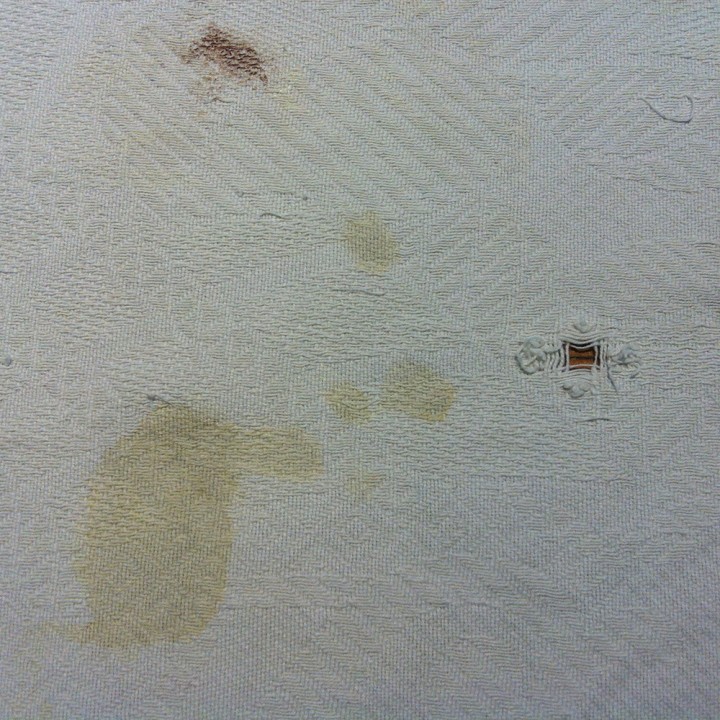
Last, we find “Secret Painting”: a square made of cast facing “Wet Paint” in the middle of the back wall, as if somebody just covered a hole. In fact, Sarjo pierced a squared and inclined 55x55cm area of the wall (same as Malevic’s painting), and then deposited inside a figurative painting made by some other artist. The piece is left imperceptible and hidden behind the layer of cement and cast. Through this act we immediately question the concept of authorship, the value of the piece itself and of the painting as an object result. Does the work lose usage value (in this case decoration), or does it gain value by augmenting its symbolic value (Let’s say, the artist’s reflexion process?)
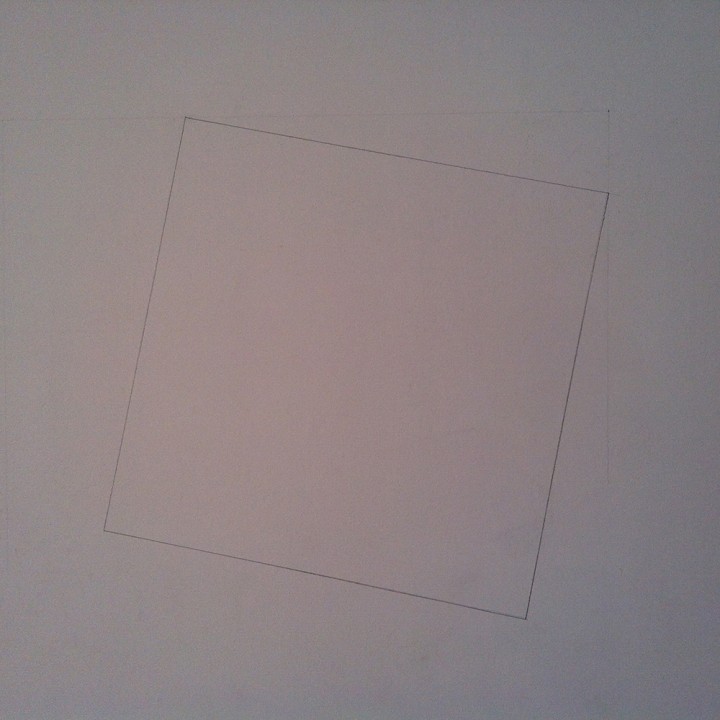
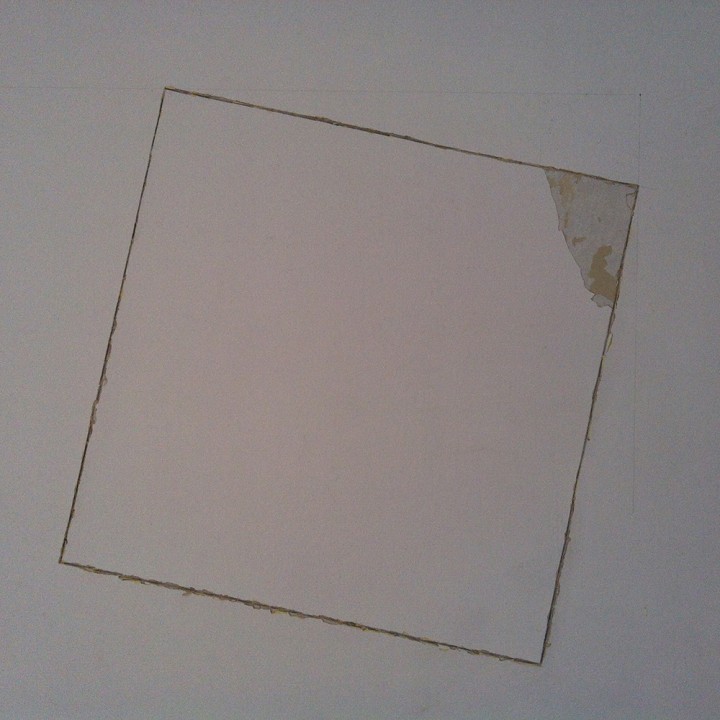
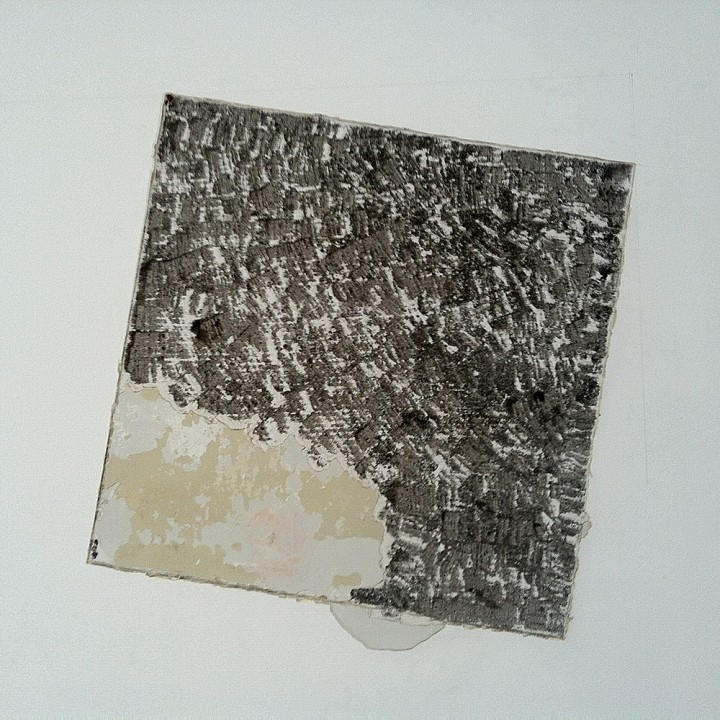
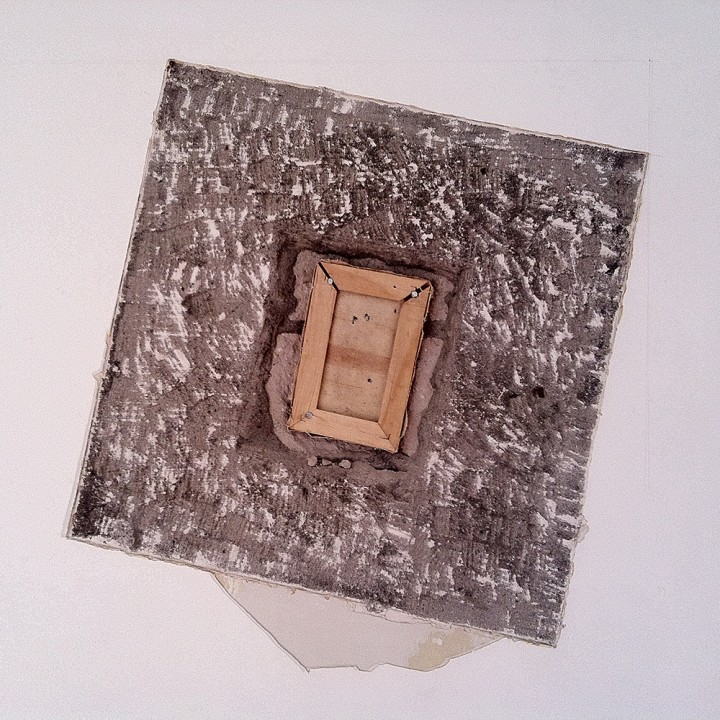
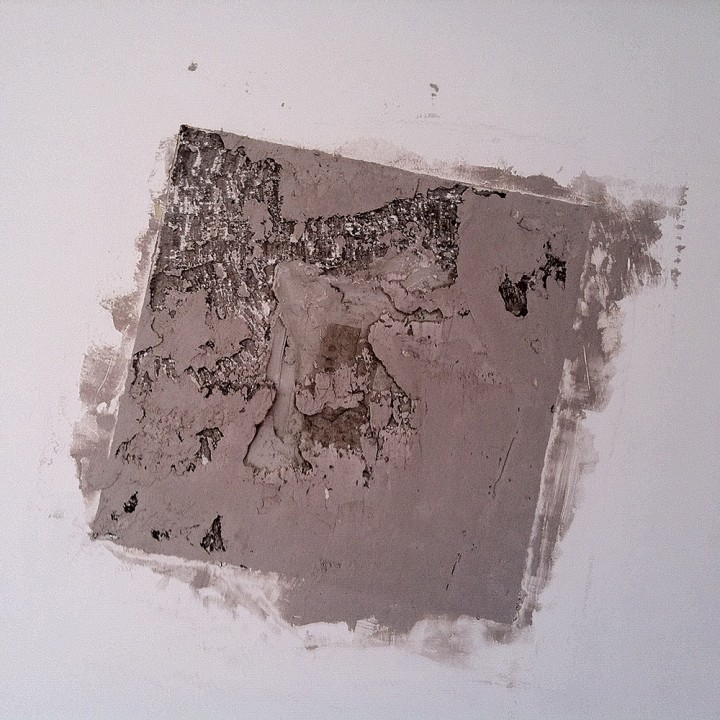
Rescuing the symbols and the author’s displacement
Something happens in “inside Outside” that diverts the flow of the present art scene, that might be catalogued as a moral quest of where the value is placed in artworks; and the peculiarity of the show, is the impossibility of measuring it by subtracting the “authorship” factor, in a moment in history where celebrity seems to be determinant for the market. It is exactly this quality what turns it in such a special kind of commodity. The author unlinks his image of his own work, analyzing “painting” as an independent concept, with the purpose of arousing a deep reflexion on “what is contemporary art”. The idea has no value. The author is a way of thinking.
The symbol usage is this show is reduced to an extreme simplicity, proposing an antithesis from the world of images, postulating that the excessive use of these has lead to a lost of meaning and effectiveness. By quoting Malevic, he aims from a different complexity in terms of content, with what looks like a simple and almost invisible realization.
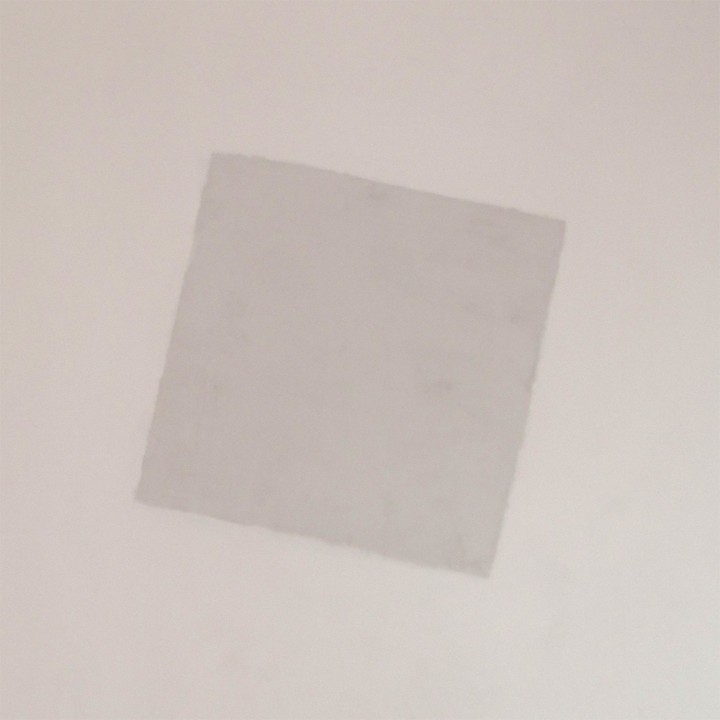
This intention of displacing the authorship and giving privilege to the reflexive space, will be one of the main pursues for the next cycles in Ejercicios Mosqueto, just because what happens in a intentioned manner can have a very interesting outcome.

 Español
Español